This article discusses training for Individual Time Trials and the importance of Mental Toughness.
There is nothing more mentally challenging than the cycling Individual Time Trial (ITT). To go fast you have to ride well into your VO2 heart rate zone. And when you are there your mind is screaming at you to stop. By using heart rate analysis we can discover what’s important when training for individual time trials.
Heart Rate Analysis and how it helps us with our Individual Time Trials
Here are two examples of cycling individual time trial (ITT) heart rate race data.
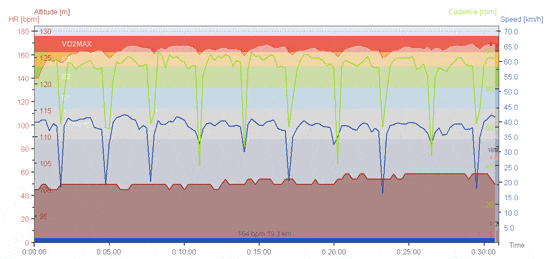
Here is a time trial on a hotdog circuit. Notice the importance of keeping the turns fast!
Tour of Coleraine individual time trial peaking at 98% of max heart rate and still riding! This is really tough riding and can only be performed after special training. 12 mins and 12 seconds of intense pain in the very edge of the VO2 Heart Rate Zone!
The training has to address two important areas. The first is the mental toughness and the second is the physical training…I prefer to do the bulk of the speed component of training on a home trainer. In this training, I recommend doing training intervals well into your VO2 heart rate zone with short recoveries in between. Here are two examples:
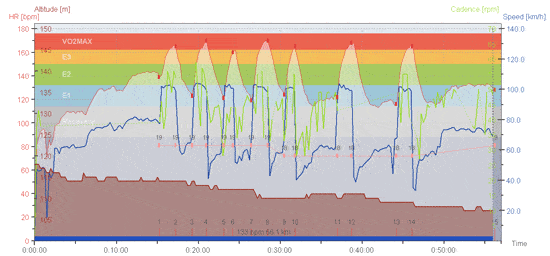
Here is an example of seven short intervals with a short recovery when training for individual time trials. Notice that the last two had a longer recovery to ensure the cyclists got through all seven intervals. These are hard and involve developing both mental toughness and the physical energy system required to ride individual time trials well.
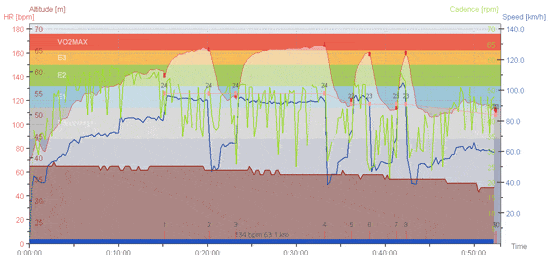
Here is another example of training for individual time trials where the recovery times are short but the intervals are varied in length. Notice the focus on the speed line (blue) and keeping it at the same level for all the intervals and then finishing the last one really fast. Also, notice the unique warm-up building to a mid-E2 value before starting the first session. Same as used for the first example.
Performing these sessions with the home trainer means that you can measure your improvement. This is much better than doing them on the road where your training is impacted by traffic lights, wind and hills. You can focus on just the training in these sessions to maximise your time.
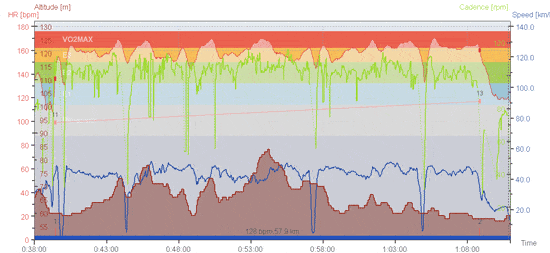
An example of training on the road for individual time trails. Notice the speed drop-off for the traffic lights (blue line). Also, notice the HR data line (top red). It’s not as consistent as the home trainer data. It’s a random approach to individual time trial training and why training on a home trainer is better.
The type and length of the intervals when training are important and dependent on your event length and course details; so it is important to get a coach to help you out if you don’t know what you are doing. Also, before I get people to do these intervals there is a lot of specific pre-training. This training for individual time trials is based around developing strength on and off the bike and aerobic energy systems.
What to do next
- We have a great list of interval sessions in our complete guide to home training that covers off training for individual time trials.
- Sign up and get access to our time trial training programs in our training programs.
For more information about time trial races:
- Australia – ATTA’s website: http://www.atta.asn.au/
- USA – USA Cycling’s website: http://www.usacycling.org/
- UK – UK Cycling Time Trial’s website: http://www.cyclingtimetrials.org.uk/

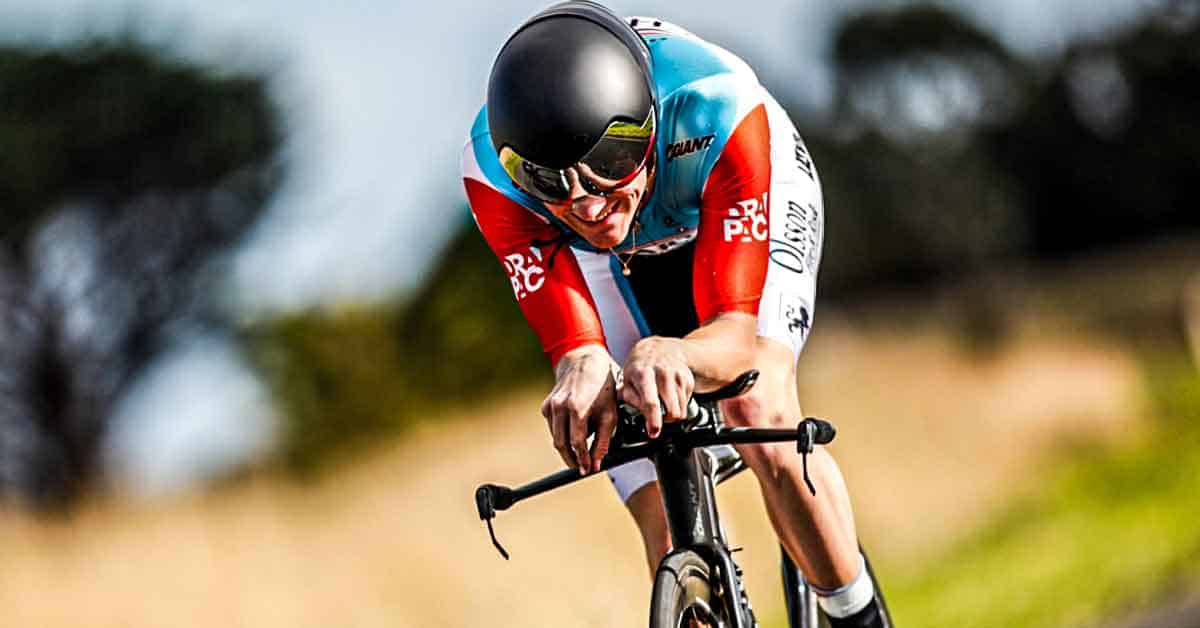
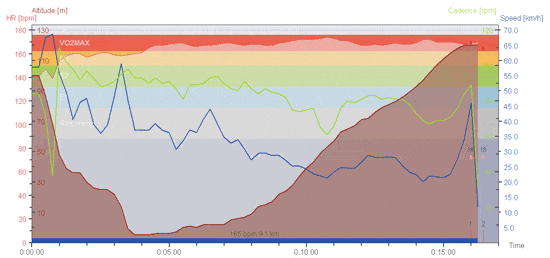




Leave A Comment